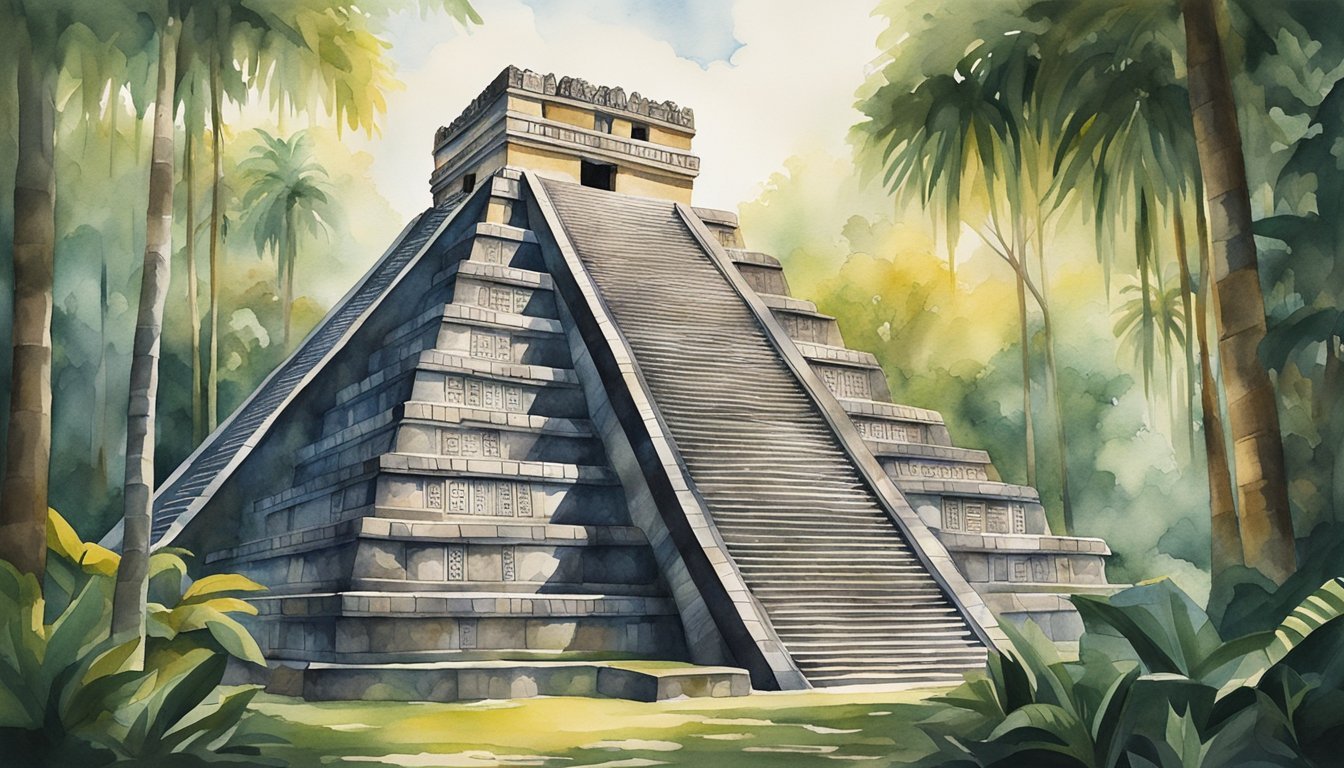Foundations of Mayan Architecture

Materials and Techniques
The Mayan civilization was known for their advanced construction techniques and use of materials. They primarily used local stones, such as limestone, to build their structures. One fascinating aspect of Mayan architecture is their use of a limestone based mortar, which was a key component in their construction process, allowing them to create strong and stable buildings. They also utilized natural resources and quarries in the region to source their construction materials.
Urban Design and City Layout
Mayan cities were carefully planned, with the city center serving as the physical and spiritual heart. Apart from the city center, Mayan architects employed urban planning principles, taking into account the location and design of their buildings to create an overall distinct style across the regions. The layout of Mayan cities shows evidence of a highly organized and informed civilization that understood the importance of spatial organization and functionality.
Religious and Astronomical Structures
One of the most remarkable aspects of Mayan architecture is the incorporation of astronomical alignments in their religious structures. The step pyramids, often seen as the most dramatic and recognizable feature of Mayan architecture, served as temples that were aligned with celestial events. In addition, other structures like palaces and ball courts were also built, reflecting the central role of religion and astronomy in the Maya civilization.
Cultural and Symbolic Aspects

Influence on Social and Political Life
Mayan architecture played a crucial role in the social and political life of the ancient civilization. Temples, palaces, and plazas were not just monumental structures but also served as locations for various activities such as rituals, ceremonies, and governing. The city center was the physical and spiritual heart of the city, where important rituals were performed in temples, palaces, and ball courts.
The structures were also used to demonstrate the power and authority of the rulers, with monumental buildings reflecting the accomplishments of the kings who commissioned them. This fostered a sense of unity among the population and reinforced their religious beliefs.
Artistry and Decoration
The artistry in Mayan architecture is evident in the intricate carvings, sculpture, and glyphs adorning many of the structures. These artistic elements often depicted scenes from mythology, religion, and the lives of royalty. For example, the Temple of the Inscriptions at Palenque has a series of glyphs and carvings that provide vital information about the city’s ruling dynasty.
Another aspect of Mayan artistic expression can be found in the vibrant wall paints that once covered many of the structures. The use of color was also a symbolic representation of the various aspects of the Mayan universe, with certain colors being associated with different deities and elements.
Rituals and Ceremonies
Rituals and ceremonies were an integral part of Mayan culture and played a significant role in the purpose and design of their architecture. Pyramids served not only as temples for religious practices but also as gigantic tombs for deceased rulers, their partners, and sacrificial victims. Offerings to the gods were made in these temples, reflecting the strong connection between the ruler, the people, and their religious beliefs.
One of the most famous examples of a Mayan ritual site is the Great Ballcourt at Chichen Itza. This structure was used for the Mesoamerican ballgame, a ritual sport played by the Maya with strong religious significance. It is believed that the outcome of the game was used to make decisions in matters of state and religion, further emphasizing the central role that rituals played in the daily life of the Maya.
In summary, Mayan architecture goes beyond aesthetics to deeply reflect the cultural and symbolic aspects of the civilization. The impressive structures were the centers of social and political life, showcasing unparalleled artistry while providing spaces for the performance of important rituals and ceremonies.

